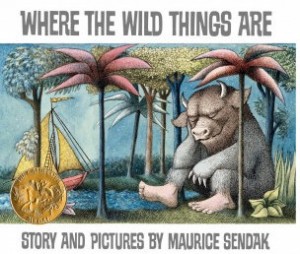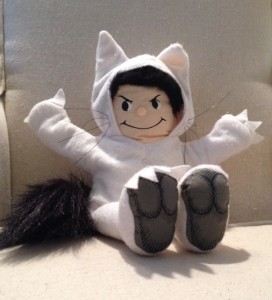Karen and I started reading to Celeste and Gavin when they were young.
Celeste was 3 months old when we began a daily ritual of reading to her at bedtime. We’d grab three or four books and read them to her as she sat on our lap and sucked her thumb.
We read the classic picture books every parent reads to their children: “Goodnight Moon,” “Green Eggs and Ham,” “Oh, the Thinks You Can Think,” “Where the Wild Things Are,” numerous Berenstain Bears adventures, and countless others I’ve long forgotten.
For months I couldn’t tell what she liked more: sucking her thumb or listening to the stories. Or perhaps she just liked sitting on our laps and hearing our voices.
Either way, we dutifully read to her every night if she wanted us to or not. Months passed, and I still had trouble telling if she enjoyed the stories. Then one day, when Celeste was 6 or 8 months old, she pointed to Max in his wolf suit and smiled. Even her thumb couldn’t hide the happiness radiating from her smile.
“Where the Wild Things Are” had become her first favorite book. She liked it so much, she had us read it to her every night for months. She’d pick it out among a hundred other books on her shelf, and point to Max every time.
Karen and I memorized that book. We’d recite it on long car rides if Celeste became antsy, and she’d calm down like one of the Wild Things listening to Max.
We looked all over for a plush Max or one of the Wild Things, knowing that Celeste would love it, but we couldn’t find them anywhere.
The best we could find was a Max hand puppet from the New York Public Library of all places, assuming I remember correctly. (It’s been 10 years, though, so don’t hold me to that.)
I think of those days now because of a story in The Washington Post about the 50th anniversary of the book. I’ve long admired the work of Maurice Sendak, but know little of the man or of the stories behind his stories.
I never knew, for example, that we can only enjoy “Where the Wild Things Are” as it is because of Sendak’s shortcomings as an artist. And there I thought he didn’t have any.
According to the article in The Post, Sendak was working on a book called “Where the Wild Horses Are,” but he couldn’t draw horses. He could draw “things,” but not horses, so the book evolved into “Where the Wild Things Are.” Children everywhere loved it.
Celeste loved it. Gavin loved it. I loved it, and now I love it more because of what it represents from the writer’s viewpoint.
Sendak took one of his shortcomings, his inability to draw horses, and turned it into an astronomical success by merely focusing on what he could do instead of dwelling on what he couldn’t do.
That’s a great lesson for every writer — and parent — to learn.





Where did you find your Max puppet?
I wish I could remember, Gina, but that was about 10 years ago, if not more. If I were looking for one today, I’d try eBay or Amazon.